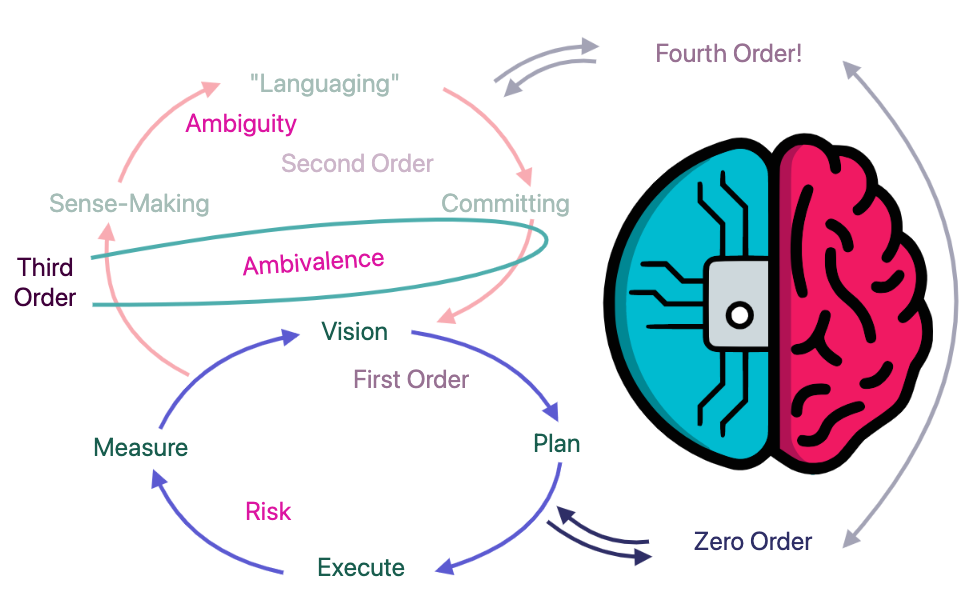Change Model
The Change Model adopts a cybernetic stance, that is to say it is about how things are guided, how changes are made, distinguishing different sorts of orders of change.
We start with the simple and obvious feedback process of the first order (Vision: Plan: Execute and Measure)
We have all had the experience, in retrospect, of looking at a change that has taken place and realising that we have:
- Started doing things that previously we though impossible and have stopped doing things we previously thought were absolutely mandatory and unavoidable.
- Realised that things we regarded as millstones and impediments turned out to be opportunities while things that we valued have been discarded.
- We are measuring and attaching value to things we did not even realise existed never mind have a value, and, finally,
- Our learning has involved forgetting!
This is all evidence that a shift has taken place from first order thinking to second order thinking which puts our original first order loop into a second order loop. This involves sense-making, that is to say, a process of re-examining and reconceptualising our ways of framing and understanding our world. One sign that this is happening is that “languaging” take place: new terms are adopted to reflect new distinctions and categorisations.
Transitions from first to second and from second back to first order work often need to be facilitated and enabled. This can take the form of the exposure of paradox and contradiction, threats and challenges. When these are orchestrated deliberately and with purpose, we identify third order interventions which are attempts to stimulate and nurture appropriate transitions between first and second order work.
Such interventions can elicit a zero-order response. This is emotional rather than rational in nature and represents the fight or fly response to threat. We represent it as a shift to the right-hand side of our model where there is a spectrum of responses from this to what we call the “fourth order” which is the seemingly spontaneous emergence of positive and fruitful commitments to transformational initiatives as a group response to situations.

